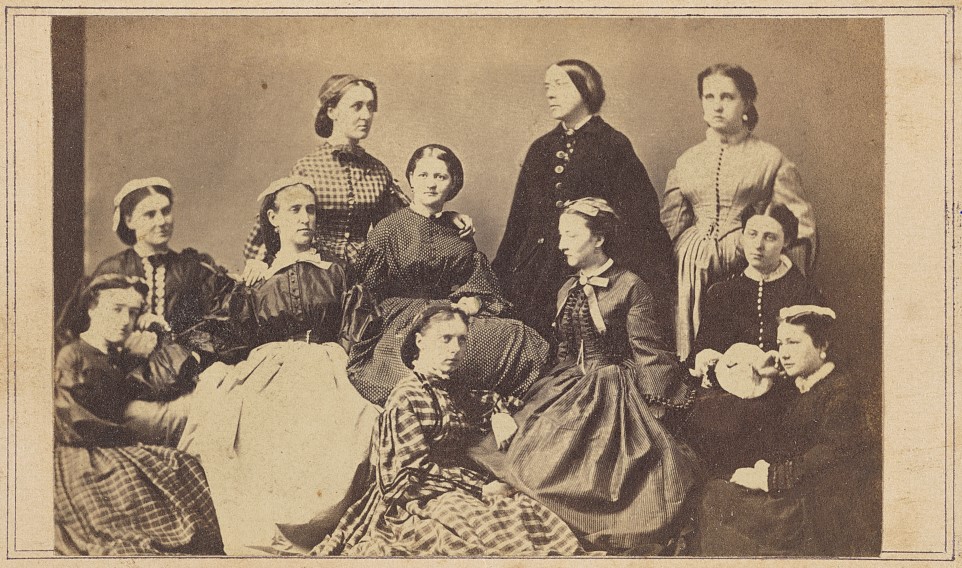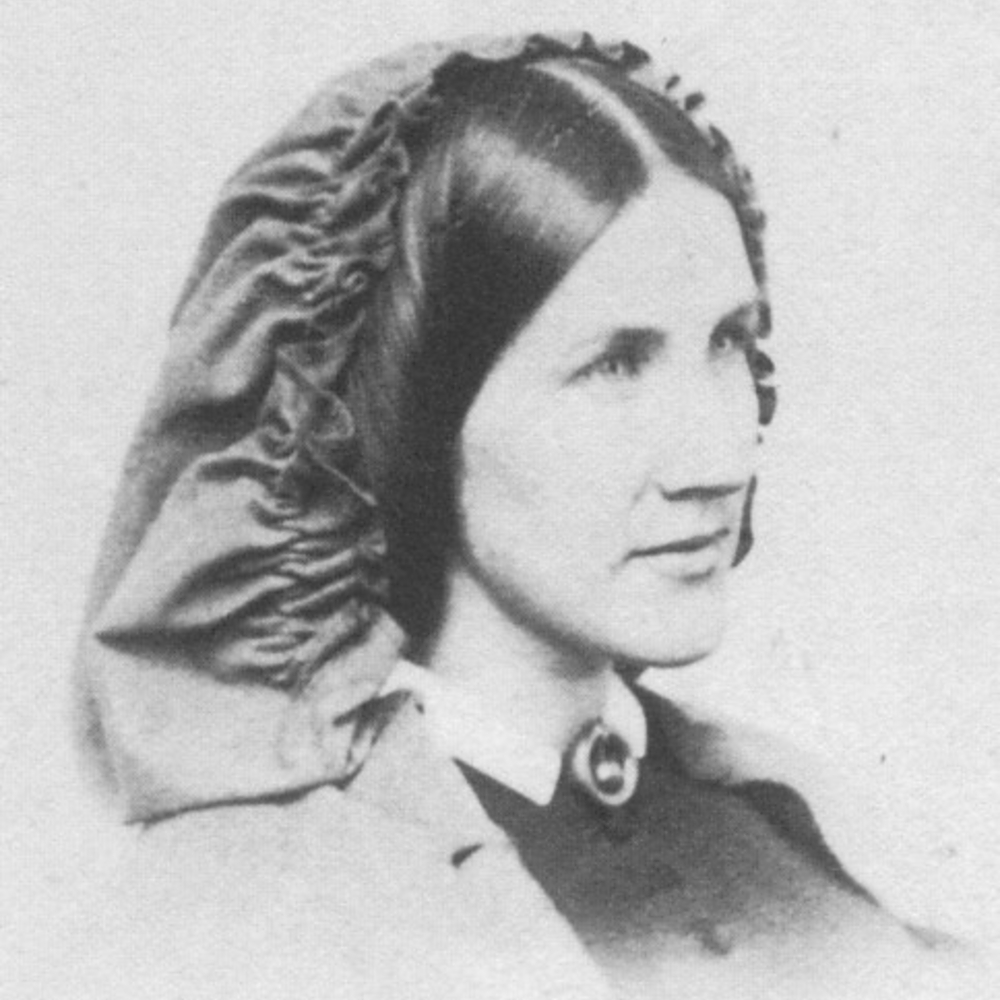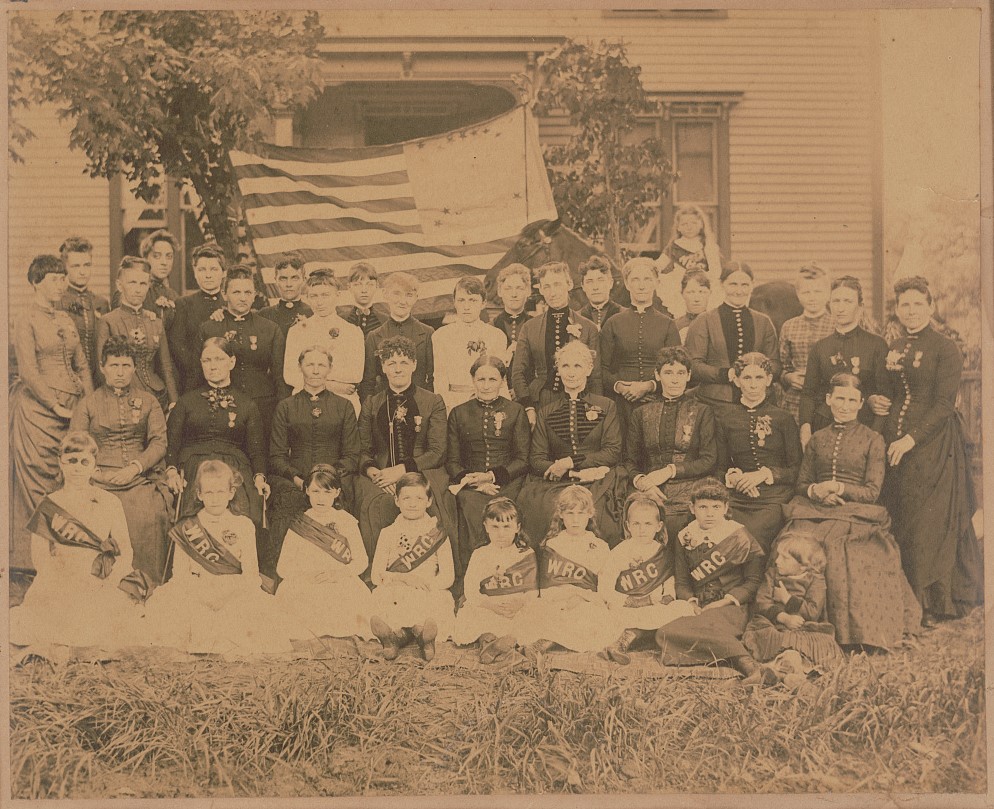
In May 1861, Georgeanna Woolsey walked into New York Hospital in Manhattan to begin training as a nurse for the Union Army. Nursing was an opportunity she had sought since the start of the Civil War in April, spurred by her brother-in-law’s enlistment in the army. She had no previous medical experience and felt “hopeless” on her first day. Yet, after a month in the hospital wards, she considered herself “competent to any small emergency, or very simple fracture.” Woolsey went on to deliver care to sick and wounded Union soldiers during almost every major military campaign in the eastern theater.
Woolsey was one of over 6,000 women who, often without any prior medical training, served as nurses for the Union Army during the Civil War. About half were appointed through the office of Dorothea L. Dix, who was named Superintendent of Army Nurses by the Secretary of War in June 1861. Hundreds more, including Woolsey herself, offered their services through private relief agencies such as the U.S. Sanitary Commission. Others were hired on a contract basis by military hospitals.
Many women acted out of a desire to support their husbands, sons, fathers, or other loved ones fighting in the war. Nursing also offered gainful employment: women working as nurses in Union military hospitals earned $12 per month, almost the equivalent of a private’s pay.

Female nurses tended to soldiers in city infirmaries, on hospital ships, and even on the battlefield, often putting their own lives in danger to minister to the injured. In addition to the physical risks, nurses endured long hours, strenuous working conditions, and rampant sexism from male doctors who disapproved of women in the medical field. Even so, nurses tolerated these hardships, Woolsey wrote in 1864, buoyed by the knowledge that they were “pioneers” and sustained by “the infinite satisfaction of seeing from day to day sick and dying men comforted in their weary and dark hours.”
https://womansreliefcorps.org/Despite the invaluable service they rendered, Union nurses received no federal benefits after the war. They were also initially excluded from Union Veterans’ organizations such as the Grand Army of the Republic. In response, women created their own organizations in the hopes of securing both appreciation and benefits for their work as nurses. In 1881, Dorothea Dix founded the Ex-Nurses Association of the District of Columbia, later renamed the National Association of Army Nurses of the Civil War (NAAN). In 1883, the Grand Army admitted both Dix’s group and the newly established Woman’s Relief Corps (WRC) as auxiliaries.
The two organizations spearheaded efforts to compensate former nurses for their service. They created in-house charitable programs, such as the WRC’s Relief Committee, so that “no nurse, no woman who loved our country well enough to make personal sacrifices, will be left in need.” In addition, they lobbied Congress to pass legislation granting pensions to former nurses, even if these pensions were only awarded on a case-by-case basis. By the mid-1880s, Congress had begun issuing pensions in the amount of $12 to $25 to individual ex-nurses who had been injured during the war or were without familial means of support.

While these pension allowances were no doubt valuable to those who received them, leaders of the WRC and the NAAN advocated for a broader pension bill benefitting all former nurses. In early 1888, Republican Senator Henry W. Blair introduced a bill in Congress granting a $25 monthly pension to all former nurses who had served a minimum of six months. However, his proposal faced opposition from senators in both parties. Fellow Republican George F. Edmunds questioned why former nurses in “perfect health” should be eligible for such benefits, while Democrat James B. Beck downplayed the nurses’ duties by saying that “women who cooked for six months” should not receive a $25 pension.
The bill failed to pass. It fared slightly better when Blair reintroduced the measure in the next session of Congress. The Senate approved it after the WRC assured lawmakers that “but a few hundred” former nurses would be affected by the legislation. But the bill died due to the inaction of the House.
During that same session of Congress in 1890, however, lawmakers did approve a sweeping service pension bill awarding a $6 to $12 pension to all honorably discharged Union Veterans who had served for at least 90 days and now suffered from any kind of disability. The act also granted pensions to the widows and dependent children of deceased Veterans who met the service and honorable discharge requirements.

Former nurses had to wait another two years before they received satisfaction from Congress. In 1892, Congress granted a monthly pension of $12 to women who had been employed as nurses by the Army or other authority “recognized by the War Department” for at least six months during the Civil War. The law only applied to women who were no longer able to support themselves through their own labor. The WRC and the NAAN applauded the legislation’s passage, even though the pension rate was less than the $25 sought in the Blair bill. Five years later, Union Army nurses also became eligible for burial in national cemeteries.
Compared to the 1890 service pension bill which added over 500,000 Veterans and survivors to the pension rolls, the 1892 law had limited reach. By the fall of 1894, an estimated 417 former nurses were collecting a pension from the government. Yet, the army nurses pension act was a landmark piece of legislation in its own right. In extending these long-overdue benefits to Civil War nurses, Congress acknowledged that women also deserved to be rewarded for their wartime contributions. The 1892 act paved the way for later legislation enacted during World War I that would grant women the same benefits as men for their military service.
By Jordan McIntire
Historian, Department of Veterans Affairs
Share this story
Related Stories

History of VA in 100 Objects
Object 96: Postcard of Veterans Vocational School
In 1918, the government created the first nationwide vocational training system to help disabled Veterans acquire new occupational skills and find meaningful work. Over the next 10 years, more than 100,000 Veterans completed training programs in every field from agriculture and manufacturing to business and photography.

History of VA in 100 Objects
Object 95: 1840 Census of Pensioners
In a first, the 1840 census collected data on Veterans and widows receiving a pension from the federal government. The government published its findings in a stand-alone volume titled “A Census of Pensioners for Revolutionary or Military Services.”

History of VA in 100 Objects
Object 94: Southern Branch of the National Home
The Southern Branch of the National Home for Disabled Volunteer Soldiers opened in Hampton, Virginia, in late 1870. The circumstances surrounding the purchase of the property, however, prompted an investigation into the first president of the National Home’s Board of Managers, Benjamin Butler.


